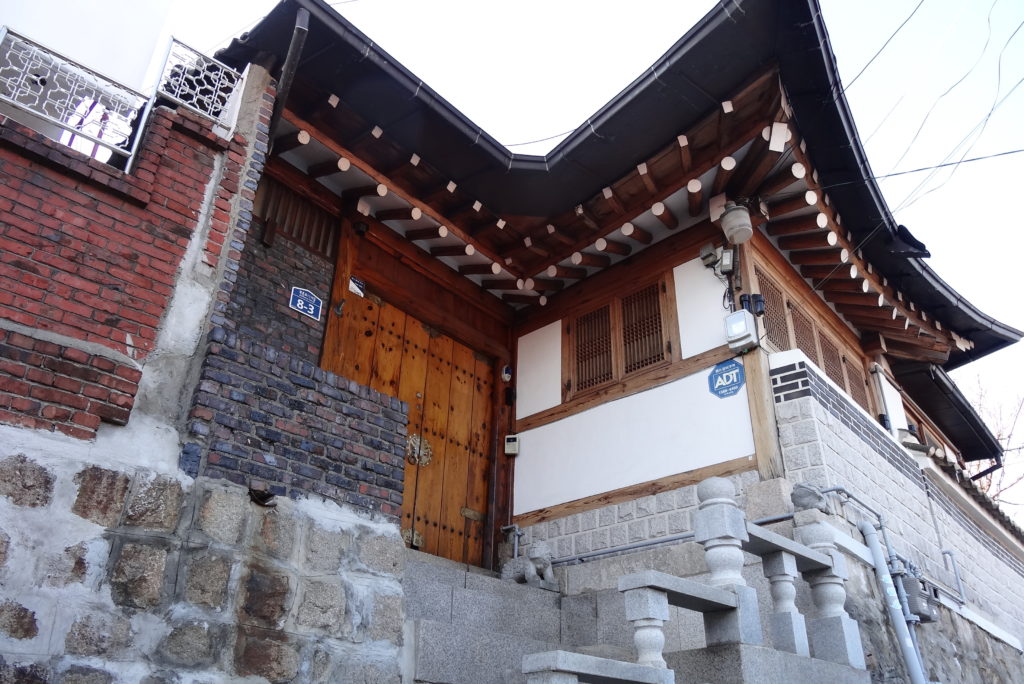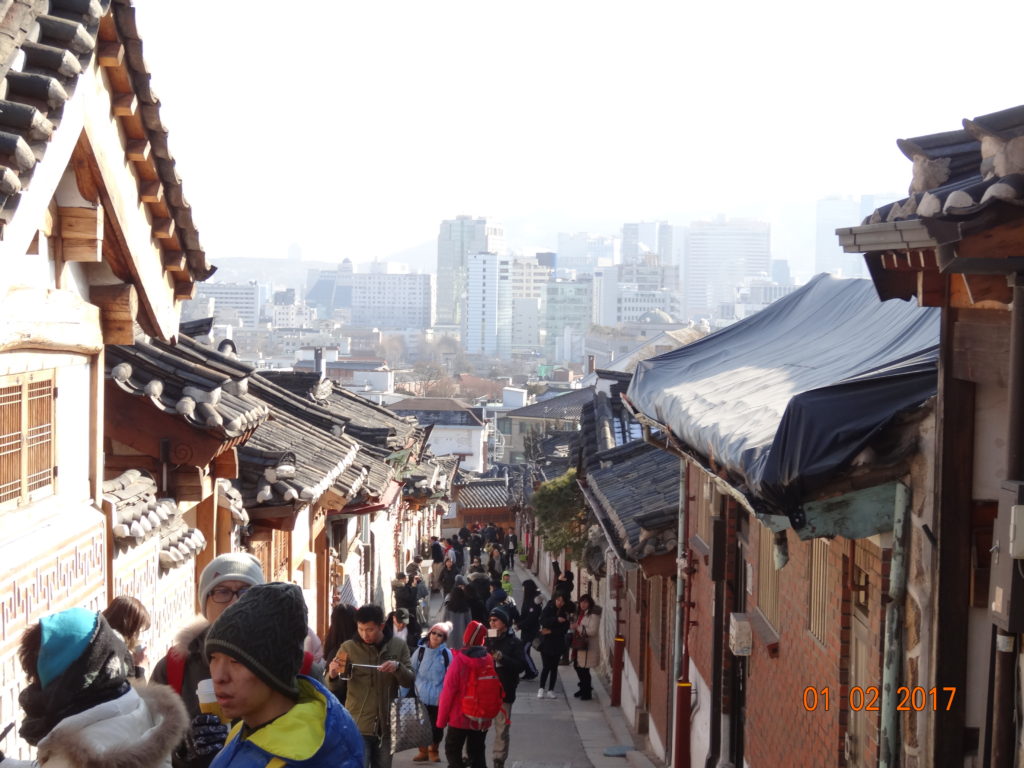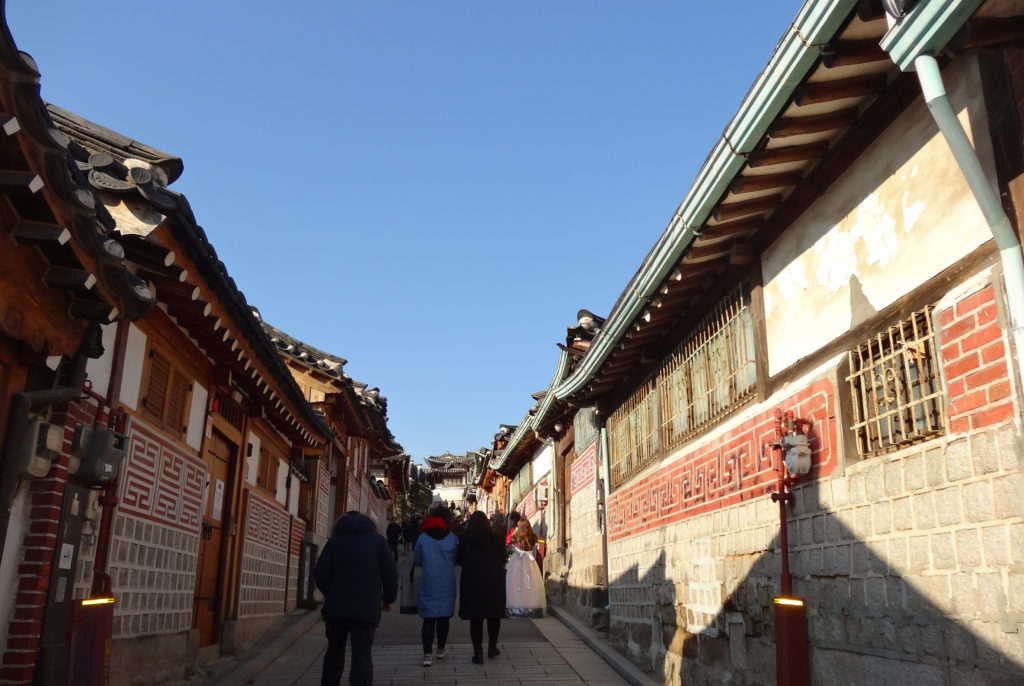Travel period Feb 2017
An Ancient Village in the Midst of A Bustling City
Bukchon Hanok is a traditional Korean village in Seoul with a long history, located between Gyeongbokgung, Changdeokgung and Jongmyo Royal Shrine. Bukchon Hanok was where the bureaucrats of Joseon Dynasty, as well as the rich wealthy aristocrats that lived hundreds of years ago.
The traditional village is composed of lots of alleys, Hanok and is preserved to show a 600-year-old urban environment. About 900 houses with Hanok architecture still retain the pristine beauty untouched by the passage of time.
Today, Bukchon Hanok Village is a fascinating collection of restaurants, tea houses, cultural centers and more; providing visitors with a rich Korean traditional cultural experience.

How to Get to Bukchon Hanok Village
We got to the Bukchon Hanok Village by taking the subway to the Anguk Station (Seoul Subway Line 3), Exit 2, and head straight. After about 300 meters we could see large information signs that begin the Bukchon Village Walking Tour. From here we just wandered around the village by ourselves.

What is Hanok
Hanok is a traditional Korean style house, influenced by the combination of China and Japan cultures. From the houses of the peasantry to the aristocratic nobility, they demonstrate these common architectural features. Mostly constructed of wood, stone, and paper with tiled roofs, their neutral hues blend well with the natural surroundings.
As such, Hanok are usually left natural and undercoated, unlike the highly decorated Korean grand palaces. In a traditional Hanok, windows, doors, and interior surfaces are covered with hanji, a strong translucent paper made from the mulberry tree.

Life in the Village
There are only a few houses that people actually live in; most of them are restored and preserved as relics. Even though the houses seem very old, they are all 100% earthquake-proof. The posts of the houses are not directly dug into the ground but somehow fitted to the cornerstones, which apparently keeps them safe when the earth starts to shake.

But there is more innovation to these old houses. Unlike many other more modern buildings in the city, the Hanok houses are environmentally-friendly. The philosophy behind them is that they are constructed in symbiosis with their surroundings.
An ideal Hanok is apparently built with the back to the mountain, and always facing the rivers. The seasons were also considered. As South Korea gets very cold in winter, the houses have under-floor heating called ondol. However, during the hot summers, the wide front porch called daecheong keeps the house cool and kind of air-conditioned.
Baek In-je House Museum
The Baek In-je Heritage House, built from the wood of the black pine of the Yalu River region, was first introduced at the Gyeongseong Exhibition in 1907. Baek In-je has many distinctive features to distinguish it from the typical houses at the same period.
Firstly unlike a traditional Hanok house, where Anchae (area for women) and Sarangchae (men’s area) are clearly separated, this house has Anchae and Sarangchae connected through a corridor. Therefore, people did not need to go out of the house, they could easily move between the area for women and men.

Japanese-style corridors, where some rooms feature tatami mats, are made of dried straw pressed tightly together to keep warm for the feet. The red bricks and glass windows are also different from the Hanok roofs built at the same time. In this home, you will also find that part of Anchae was built with a two-story structure, that was unprecedented in Hanok architecture in Joseon time.
Across from the anchae is the gate of the haengnangchae, the servant’s quarters. This grand Hanok also features a beautifully manicured garden. The museum is open from Tuesday – Sunday, 10:00 am – 5:00 pm and admission is free.

Before the sun starts setting, we climbed to the top of Gahoe-dong to watch as old Seoul meets new Seoul under the golden glow of the setting sun. Standing, surrounded by traditional Hanoks, atop a hill we witnessed the contrasting views of modern Seoul in the distance; it is a sight to behold.
Our Experience
The entire experience in the Bukchon Hanok Village was very calming and relaxing. Unlike the hectic city, one really gets to let go. We took our time to wander around the village, as there are many scattered museums, tucked away inside the Hanoks throughout Bukchon Hanok Village. Not to forget the cafes, tea houses and handicraft shops within the village.

Nevertheless, the real charm of Bukchon lies in its tiny alleys, that wind and twist between its age-old, still-lived-in Hanoks, where everyday life runs its course. For us, the alleys of Bukchon provided an interesting look into the lives of ordinary Koreans.
Admission is FREE!
Getting There: Take Seoul Subway Line 3 to Anguk Station (Exit 2)
Also Read

